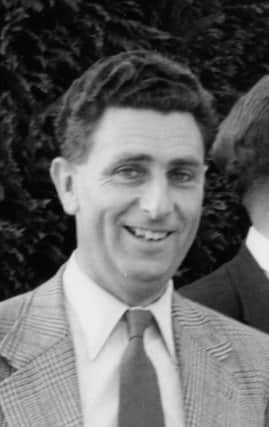Obituary: Dr William Henry Penley, CB, CBE, radar pioneer


Almost exactly 77 years ago, on a bitterly cold and windy February day at Douglas Wood near Dundee, a young physicist, Dr Bill Penley, was climbing up the slippery, ice-coated rungs of a series of 50ft ladders to a 200-ft platform on a 360ft high latticework transmitter tower.
He was developing Chain Home (CH) radar, the early-warning system that would, four months later, allow British pilots to intercept the waves of Hitler’s Luftwaffe in the Battle of Britain from June to September 1940, and win. The system would be ready just in time.
Advertisement
Hide AdAdvertisement
Hide Ad“We… held on as best we could and struggled up… moving only one limb at a time,” Penley recalled. “We decided to tie ourselves to strong ropes attached to the platform.” Eventually, after many climbs, Penley and others in the team of experimental scientists recruited for the job would be able to do the ascent in five minutes, and winch up the materials for the complex wiring, the arrangement of which they had to devise on the spot.
For three months, from February to May 1940, Dundee was the focus of the national effort, begun in 1935, as war loomed, to find a way to counter air attack. Dundee University College, the alma mater of Sir Robert Watson-Watt, the Scots-born “father of radar”, offered its facilities to the scientists in 1940 after their original base, at Bawdsey Manor on the Suffolk coast – of which Watson-Watt was superintendent – was deemed too exposed to enemy bombers.
Penley, aged 22, and having just finished a PhD at Liverpool University, had applied for the top secret job after an academic acquaintance told him of the “grand time” to be enjoyed doing something interesting of which the authorities forbad description.
Directed to Dundee, Penley arrived on 8 February and there signed the Official Secrets Act. He would spend much of the next three months in a hut, or up a mast, wearing long johns, several pullovers, a balaclava and windproof coat against the weather.
Interludes of exchanging thoughts over coffee in the library at the Teacher Training College in Park Place in the city centre allowed fingers, feet, and minds to get warmed up: “There was no hesitation in putting forward ideas,” Penley wrote. “There was a great team spirit.”
The scientists would be recalled south in May 1940, to a new base in Dorset, where they would stay for two years, before moving to Worcestershire.
The team, renamed in November 1940 the Telecommunications Research Establishment (TRE), would develop after the war into the Radar Research Establishment, later the Royal Radar Establishment (RRE). From 1953 Penley was to be head of the guided missile department, a post he would keep until he became the establishment’s director in 1961; in the same year he would be appointed CBE.
The precarious perch on the mast at Dundee was the fulfilment of Penley’s desire to have a secure job. The son of a seller of navigational instruments and a steam laundry manageress, he had decided against his singing teacher’s imploring him to make a career in music. Having done well at Wallasey Grammar School, Cheshire, he took a first-class degree in electrical engineering, and went on to research the performance of insulators under high frequency and high voltage stresses.
Advertisement
Hide AdAdvertisement
Hide AdHe nevertheless carried on singing throughout the war, persuading friends and fellow scientists to perform wherever they were based. He found his musical training as a baritone helped him use his voice to take command of meetings. He gained a reputation as an inspirational colleague who was good at delegating work.
From 1962 Penley’s career took him to London as director general of electronics research and development at the Ministry of Aviation. Promoted to deputy controller of electronics at the Ministry of Technology in 1966, he found himself in disagreement with the minister, Tony Benn, over how British electronics advances could best be supported. Appointed CB in 1967, he became director of the Royal Armament Research and Development Establishment at Fort Halstead in Kent; Chief Scientist (Army), then Controller of all the Ministry of Defence’s research establishments, and professional head of the science group of the civil service. He retired in 1977.
He married, first, Raymonde Gough, always known as Raye, a TRE colleague, in 1943; they had a daughter, Sharon, and two sons, Christopher and Jonathan. Raye died in 1975. Christopher died in 2012. Penley married, secondly, Marion Claytor, another friend from radar days, in 1977; she died in 2004. His third marriage, in 2006, was to Joanna Anderson-Doig, a musician. She, with his daughter and younger son, survives him. ANNE KELENY